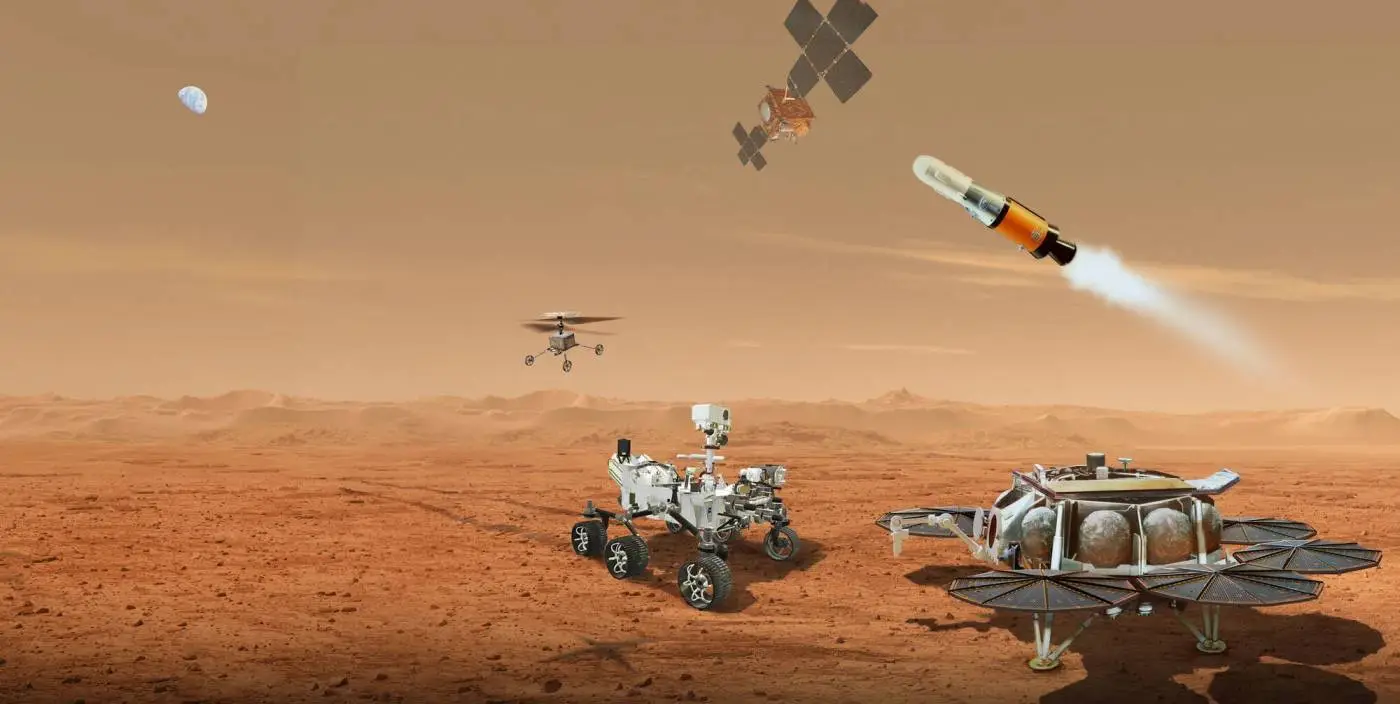The search for existence and life force on and around Mars holds a key mystery that is slowly being unveiled and as usual, NASA would like the world to join them.
During the next briefing to the media the space agency will report on the Mars Sample Return (MSR), one of its most challenging missions aimed at retrieving rock and soil samples from Mars and returning them to Earth for the first time ever.
Why the Mars Sample Return Matters?

The Mars Sample Return mission in its capacity part of NASA’s current scientific endeavors exploring Mars cannot be overemphasized. In this case, scientists are interested in obtaining samples taken from the Martian surface in order to resolve issues of Martian geological structure, climatic evolution and even possibility of life on the planet.
Read Also: NASA Updates Coverage for US Spacewalks 90, 91 Outside Space Station
These samples could contain answers to many questions such as if the planet was inhabited by microbial life in the past and what its evolution process was through billions of years.
In other cases, samples need to be brought back to the Earth in order to apply equipment and methods which are inaccessible to Martian rovers and stations. The mission might also be relevant for future human exploration of the planet, according to the mission’s conclusions.
Key Details of the Media Call
At the media call, the experts from NASA and media relations will join the line-up from the Mars Exploration Program as well as the international collaborators. The discussion will highlight recent progress in the MSR mission, including updates on:
Sample Collection: Information regarding some of the samples that have already been collected by the Perseverance rover, that landed in the Jezero Crater in February of this year.
Engineering Developments: Accomplishments toward creating and developing spacecraft and systems that must be used for the collection, transport, and delivery of the samples to the Earth.

Collaborative Efforts: Information on how the project of this kind is being implemented in cooperation with the ESA and other foreign counterparts by NASA.
How to Tune In?
The call to the media is to be done at [insert date and time]. Journalists and any member of the public interested can participate via live stream or listen through any NASA affiliated channels. Answers to questions from the media shall also be given during the call which will afford further discussion on the mission, its goal as well as the issues that are likely to be encountered.
The Road Ahead
Mars Sample Return mission can be considered a historic moment for planetary research and exploration campaigns. That said, issues persist that are to do with technology, such as creating sophisticated robots, unmanned systems, and Martian transportation: The mission’s success could change our understanding of Mars and our position in it.
Read Also: How NASA Tracked the Most Intense Solar Storm in Decades?
That being said, whenever NASA posts a new update, the rest of the world gets to see how people are expanding the limits of exploring the unknowns of space.
Regardless of whether one might be the scientist, the space lover, or just adventurous spirit, the Mars Sample Return mission will be one incredible story that will take us one step closer toward understanding Martian enigma. Check out the latest from NASA as this revolutionized mission continues on!
Frequently Asked Questions!
What is the NASA announcement for 2024?
NOAA, NASA to report 2024 worldwide temperature positioning, environment occasions. Environment specialists from NOAA and NASA will give a recap and positioning of the worldwide temperature for 2024 from both NOAA and NASA, the critical worldwide climate and environment occasions from last year, and a survey of the sea heat content and ocean ice.
Why did NASA stop exploring the ocean?
Misdirecting. NASA didn't suddenly stop remote ocean research following the disappointment of a satellite in 1978. The organization keeps on concentrating on the profound sea and sent off missions as of late as 2021. This article was delivered by the Reuters Truth Really take a look at group.
Why can't we land on the Moon again?
The political back-and-forth over NASA's central goal and financial plan isn't the main explanation individuals haven't gotten back to the moon. The moon is likewise a 4.5-billion-year-old passing snare for people and should not be played with or misjudged. Surface is covered with cavities and rocks undermine safe arrivals.
You Must Also Like
What is Voyager 1 Impossible Discovery after 45 Years Nasa?

